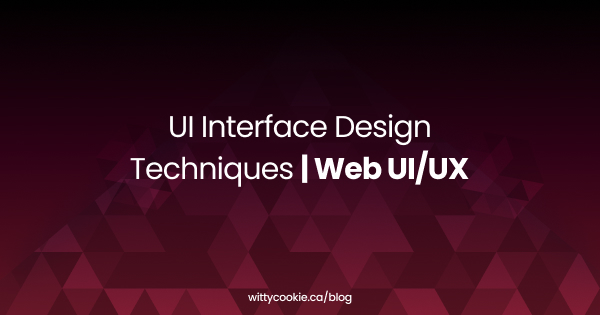UI Interface Design Techniques | Web UI/UX
Digitalization in Business
As technology advances and becomes increasingly more developed, we gradually become more dependent on it in our everyday lives. In regards to business, companies now need an online presence to stay alive in the competitive market, and the main domain to root their online marketing efforts is their website. Having a company website provides an insight into the quality of your products and services to the global marketplace of current as well as potential customers. As a result, it is crucial to use the proper website design techniques to create a user friendly design and UI interface for your website as they have a direct impact on how customers perceive your brand and its quality and professionalism. In this article, we will discuss 3 types of UI/UX web design techniques that you can choose from when designing, developing, and implementing your own web UI/UX. These are responsive websites, flat websites, and minimalist websites.
Web Styles
1. Responsive
Responsive Web Design is an approach in which your website changes depending on the way in which your user views your website. Factors that go into a responsive user interface include designing for the screen size of the device in which your user is viewing your website on, as well as the orientation of their device. In order to stay competitive in the technological landscape and world of today, it is vital to have your website be mobile and tablet optimized. This is because of the growing popularity of smartphones and tablets due to their high degree of mobility and convenience. Reduce the possible friction points between your website and your user by providing multiple options for their choosing.
For information on the required screen sizes for responsive UX and their associated break points, check out this article by Microsoft!
2. Flat
Another kind of web concept is Flat Web Design (also known as a Static Web Page). Flat Web Design is an approach which has a two-dimensional and simple user interface design and nature. However, this approach is not as popular as responsive web designs as it is not interactive and responsive to multiple device and screen sizes. As a result, it is a less appropriate choice for businesses, especially those who put high emphasis on their website and online presence.
3. Minimalist
Minimalist Web Design (also known as Sleek Web Design) is an approach that works on simplifying the web UI interface to refine and remove any unnecessary elements and features from the website. Minimalist business websites are effective at creating a near and clean web page as it provides clear segmentation and distinctions between the various segments and sections on your website to provide an easy and intuitive navigation experience for your users.
Want a professional website? Check out WittyCookie’s award-winning website design and development services.



